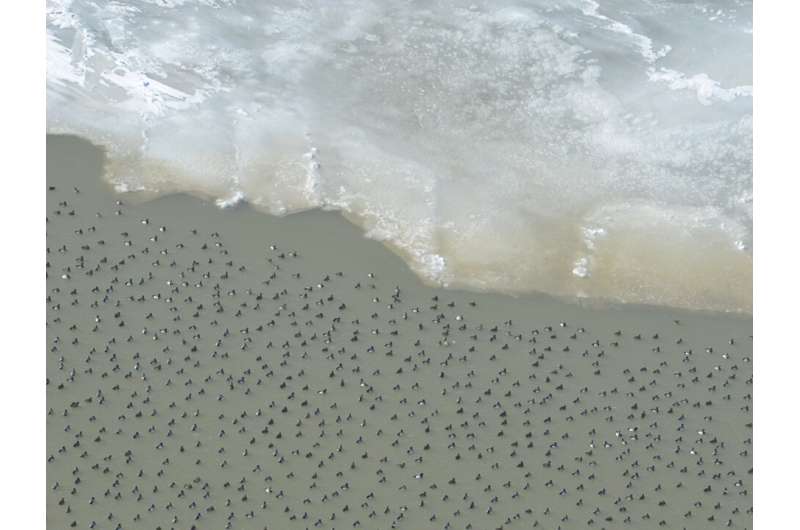Conservation or construction? Deciding waterbird hotspots

Imagine your favorite beach filled with thousands of ducks and gulls. Now envision coming back a week later and finding condos being constructed on that spot. This many ducks in one place surely should indicate this spot is exceptionally good for birds and must be protected from development, right?
It depends, say Michigan State University researchers.
In a new paper published in Methods in Ecology and Evolution, scientists show that conservation and construction decisions should rely on multiple approaches to determine waterbird "hotspots," not just on one analysis method as is often done.
"Waterbirds can move far in a short time, and they also are known to aggregate in clusters of hundreds or even thousands," said Elise Zipkin, MSU integrative biologist and study co-author. "Just because there are many birds in a particular location at a particular time, doesn't necessarily mean the location is a hotspot. It is important to distinguish whether that location is used repeatedly by the birds or if it is just a one-off use."
Knowing how many species and individuals use a designated area, and how often, can help determine whether building a housing development, creating a wind farm or establishing a marine sanctuary is the best choice. Yet, the new research found that the most popular methods to determine animal hotspots can produce vastly different conclusions.
"Our research didn't find one method was better than the others, but we did learn that certain methods might be better in some situations than in others, and in fact, the best approach may be to use a combination of methods," Zipkin said. "The more data-driven ways to make a decision, the better."
Allison Sussman, former MSU graduate student and lead author, notes that conservation and management decisions are often long-lasting and should be done carefully with full understanding of the data and methods being used.
The team studied a wide range of Great Lakes waterbirds including loons, ducks, mergansers, gulls and scaup. The bird data were evaluated using four different hotspot analysis methods. Not one produced the same results, though a couple were similar.
"The Great Lakes are home to hundreds of bird species and are a phenomenal resource not only ecologically, but recreationally and commercially as well," said Sussman, currently a database and GIS specialist at the U.S. Geological Survey. "If we want to preserve our beaches, shorelines and rivers we need to know which areas are actually hotspots that need conserving. Using the right combination of methods is important to achieve the right outcomes."
While the team studied Great Lakes waterbirds, the goal was to determine which hotspot methods are most appropriate to inform conservation management decisions generally.
"The Great Lakes, the Galapagos or the Amazon—it doesn't matter where on Earth you are—conservation is a timely and important topic," Sussman said. "Hopefully our findings can be used to make better management decisions in protecting the planet."
More information: Allison L. Sussman et al. A comparative analysis of common methods to identify waterbird hotspots, Methods in Ecology and Evolution (2019). DOI: 10.1111/2041-210X.13209
Journal information: Methods in Ecology and Evolution
Provided by Michigan State University


















